Geforce GTX 980 Jetstream 4GB GDDR5 Graphics Card NE5X980014G2-2042J
|
Geforce GTX 980 Jetstream 4GB GDDR5 Graphics Card NE5X980014G2-2042J Discontinued |
|
| More variations available Show | |
Replaced by the Palit Geforce GTX 980 Ti Super Jetstream 6GB GDDR5 NE5X98Th25JB-2000J
The GeForce GTX 980 is the world’s most advanced GPU. Powered by next-generation NVIDIA Maxwell architecture, it delivers incredible performance, unmatched power efficiency, and cutting-edge features.
The revolutionary Palit JetStream series of graphics cards features advanced innovative cooling and an optimised product design to deliver gamers the ultimate gaming experience. As the latest and the next generation NVIDIA Maxwell architecture features low power consumption, 4K Shadow Play and dynamic super resolution. With the GeForce Experience, the Palit GeForce GTX 980 JetStream guarantees gamers cutting-edge performance and an explosive new gaming experience.
Features
- Powered by NVIDIA GeForce GTX 980 GPU
- Semi-fanless GPU cooler pre-installed
- Integrated with 4096MB GDDR5 memory and 256-bit memory interface
- Features Dual link DVI-I, mini-HDMI and 3x mini-DisplayPort
- Core Clock: Base / Boost clock:1127 / 1216 MHz
- Supports NVIDIA G-Sync, 3D Vision, CUDA, PhysX, Super Resolution Technology
- G3D benchmark rating: 9656
Maxwell is the most advanced GPU architecture ever made, designed to be the engine of next generation gaming. Inspired by light, it was designed to solve some of the most complex lighting and graphics challenges in visual computing. For the first time, gaming GPU’s can dynamically render indirect light using the new VXGI (Voxel Global Illumination technology). Scenes are significantly more lifelike as light interacts more realistically in the game environment.
The GTX 980 is the worlds fastest GPU delivering 2x the performance of previous-generation card, bringing new gaming experiences to virtual reality, and ultra resolution 4k displays.
Enable the detail of 4k monitors, on a 1080P display. DSR produces smoother images by rendering a game at a high resolution, then downscaling it to the native resolution of the display using advanced filtering.
GeForce GTX 980 cards support tear-free, super-fast NVIDIA G-Sync monitor display technology including 4k. Together, these technologies provide the most immersive and competitive gaming experiences possible.
| Specifications | Palit GTX 980 |
|---|---|
| Product Number | NE5X980014G2-2042J |
| Memory Amount | 4096MB |
| Memory Interface | 256bit |
| DRAM Type | GDDR5 |
| Graphics Clock | Base Clock : 1127MHz / Boost Clock : 1216MHz |
| Memory Clock | 3500 MHz (DDR 7000 MHz) |
| CUDA Cores | 2048 |
| Memory Bandwidth (GB/sec) | 224 |
| NVIDIA G-SNYC | Yes |
| NVIDIA SLI-ready | 2-way |
| NVIDIA 3D Vision Ready | Yes |
| NVIDIA 3D Vision Surround Ready | Yes |
| NVIDIA PureVideo HD Technology | Yes |
| NVIDIA PhysX-ready | Yes |
| NVIDIA CUDA Technology | Yes |
| NVIDIA GPU Boost | 2. 0 0 |
| NVIDIA Adaptive Vertical Sync | Yes |
| Microsoft DirectX | 12 |
| OpenGL | 4.4 |
| Bus Support | PCI-E 3.0 x 16 |
| Certified for Microsoft Windows 7 | Yes |
| Certified for Microsoft Windows 8 | Yes |
| Maximum Digital Resolution | 4096×2160 |
| Maximum VGA Resolution | 2048×1536 |
| Dual-Link DVI | Yes |
| HDCP | Yes |
| HDMI | mHDMI 2.0 |
| DisplayPort | mini-DisplayPort x 3 1.2 |
| Height | 2.5 Slot |
| Overall dimensions | 280 x 133 x 52mm (L x W X D) |
| Graphics Card Power | 180 W |
| Minimum Recommended System Power | 500 W |
| Supplementary Power Connectors | 6-pin X1 8-pin X1 |
| Accessory | Manual, Driver Disc, DVI-CRT Adapter, Power Cable |
| Warranty | 24 months |
| EAN barcode | 4710636268571 |
| Specifications | Palit GTX 980 |
|---|---|
| Product Number | NE5X980014G2-2042J |
| Memory Amount | 4096MB |
| Memory Interface | 256bit |
| DRAM Type | GDDR5 |
| Graphics Clock | Base Clock : 1127MHz / Boost Clock : 1216MHz |
| Memory Clock | 3500 MHz (DDR 7000 MHz) |
| CUDA Cores | 2048 |
| Memory Bandwidth (GB/sec) | 224 |
| NVIDIA G-SNYC | Yes |
| NVIDIA SLI-ready | 2-way |
| NVIDIA 3D Vision Ready | Yes |
| NVIDIA 3D Vision Surround Ready | Yes |
| NVIDIA PureVideo HD Technology | Yes |
| NVIDIA PhysX-ready | Yes |
| NVIDIA CUDA Technology | Yes |
| NVIDIA GPU Boost | 2. 0 0 |
| NVIDIA Adaptive Vertical Sync | Yes |
| Microsoft DirectX | 12 |
| OpenGL | 4.4 |
| Bus Support | PCI-E 3.0 x 16 |
| Certified for Microsoft Windows 7 | Yes |
| Certified for Microsoft Windows 8 | Yes |
| Maximum Digital Resolution | 4096×2160 |
| Maximum VGA Resolution | 2048×1536 |
| Dual-Link DVI | Yes |
| HDCP | Yes |
| HDMI | mHDMI 2.0 |
| DisplayPort | mini-DisplayPort x 3 1.2 |
| Height | 2.5 Slot |
| Overall dimensions | 280 x 133 x 52mm (L x W X D) |
| Graphics Card Power | 180 W |
| Minimum Recommended System Power | 500 W |
| Supplementary Power Connectors | 6-pin X1 8-pin X1 |
| Accessory | Manual, Driver Disc, DVI-CRT Adapter, Power Cable |
| Warranty | 24 months |
| EAN barcode | 4710636268571 |
See Also
Graphics and TV Cards
Ultra Grade Products
Product Resources
- Download latest NVIDIA drivers
- Palit website
Top PC Gaming Products
Recently Viewed Products
Nvidia GeForce GTX 980 vs Palit GeForce GTX 980 JetStream: What is the difference?
46points
Nvidia GeForce GTX 980
47points
Palit GeForce GTX 980 JetStream
vs
54 facts in comparison
Nvidia GeForce GTX 980
Palit GeForce GTX 980 JetStream
Why is Nvidia GeForce GTX 980 better than Palit GeForce GTX 980 JetStream?
- 3 more DisplayPort outputs?
3vs0 - 47.
 7GTexels/s higher 3DMark Vantage Texture Fill result?
7GTexels/s higher 3DMark Vantage Texture Fill result?
173.1GTexels/svs125.4GTexels/s - 1 more displays supported?
4vs3 - 2 more GPUs supported?
4vs2 - 14mm narrower?
266mmvs280mm - 22mm shorter?
111mmvs133mm
Why is Palit GeForce GTX 980 JetStream better than Nvidia GeForce GTX 980?
- Has Double Precision Floating Point (DPFP)?
- 3 more mini-DisplayPort outputs?
3vs0
Which are the most popular comparisons?
Nvidia GeForce GTX 980
vs
XFX HD 6950 XXX 2GB
Palit GeForce GTX 980 JetStream
vs
Asus Strix Radeon R9 390 DirectCU III OC
Nvidia GeForce GTX 980
vs
Nvidia GeForce RTX 2060
Nvidia GeForce GTX 980
vs
Nvidia GeForce RTX 3050 Laptop
Nvidia GeForce GTX 980
vs
AMD Radeon RX 580
Nvidia GeForce GTX 980
vs
Nvidia GeForce GTX 970
Nvidia GeForce GTX 980
vs
Nvidia GeForce GTX 1050
Nvidia GeForce GTX 980
vs
Asus ROG Strix GeForce GTX 1050
Nvidia GeForce GTX 980
vs
Manli GeForce GTX 1650
Nvidia GeForce GTX 980
vs
Nvidia Geforce GTX 1660 Super
Nvidia GeForce GTX 980
vs
Asus ROG Strix GeForce GTX 1050 Ti OC
Price comparison
User reviews
Performance
1. GPU clock speed
GPU clock speed
1126MHz
1127MHz
The graphics processing unit (GPU) has a higher clock speed.
2.GPU turbo
1216MHz
1216MHz
When the GPU is running below its limitations, it can boost to a higher clock speed in order to give increased performance.
3.pixel rate
72.1 GPixel/s
72.1 GPixel/s
The number of pixels that can be rendered to the screen every second.
4.floating-point performance
4.6 TFLOPS
4.62 TFLOPS
Floating-point performance is a measurement of the raw processing power of the GPU.
5.texture rate
144 GTexels/s
144 GTexels/s
The number of textured pixels that can be rendered to the screen every second.
6.GPU memory speed
1753MHz
1753MHz
The memory clock speed is one aspect that determines the memory bandwidth.
7.shading units
Shading units (or stream processors) are small processors within the graphics card that are responsible for processing different aspects of the image.
8.texture mapping units (TMUs)
TMUs take textures and map them to the geometry of a 3D scene. More TMUs will typically mean that texture information is processed faster.
9.render output units (ROPs)
The ROPs are responsible for some of the final steps of the rendering process, writing the final pixel data to memory and carrying out other tasks such as anti-aliasing to improve the look of graphics.
Memory
1.effective memory speed
7012MHz
7012MHz
The effective memory clock speed is calculated from the size and data rate of the memory. Higher clock speeds can give increased performance in games and other apps.
2.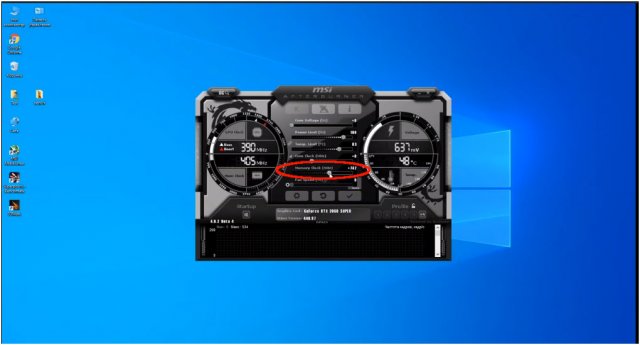 maximum memory bandwidth
maximum memory bandwidth
224GB/s
224GB/s
This is the maximum rate that data can be read from or stored into memory.
3.VRAM
VRAM (video RAM) is the dedicated memory of a graphics card. More VRAM generally allows you to run games at higher settings, especially for things like texture resolution.
4.memory bus width
256bit
256bit
A wider bus width means that it can carry more data per cycle. It is an important factor of memory performance, and therefore the general performance of the graphics card.
5.version of GDDR memory
Newer versions of GDDR memory offer improvements such as higher transfer rates that give increased performance.
6.Supports ECC memory
✖Nvidia GeForce GTX 980
✖Palit GeForce GTX 980 JetStream
Error-correcting code memory can detect and correct data corruption. It is used when is it essential to avoid corruption, such as scientific computing or when running a server.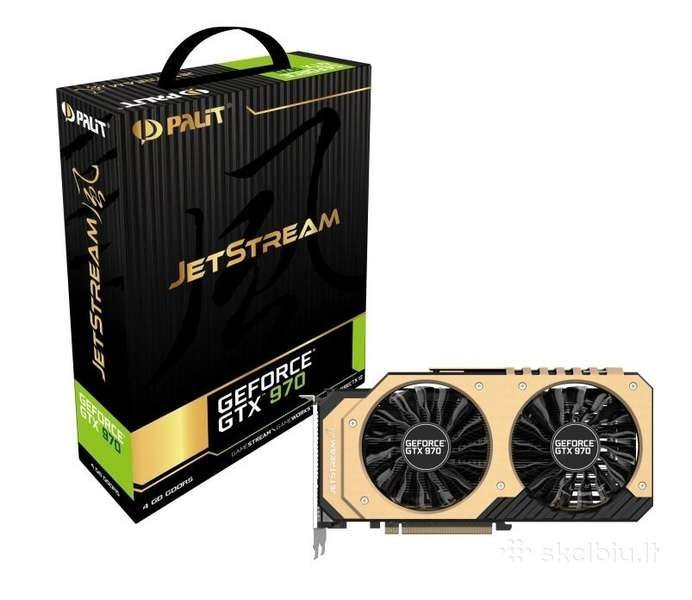
Features
1.DirectX version
DirectX is used in games, with newer versions supporting better graphics.
2.OpenGL version
OpenGL is used in games, with newer versions supporting better graphics.
3.OpenCL version
Some apps use OpenCL to apply the power of the graphics processing unit (GPU) for non-graphical computing. Newer versions introduce more functionality and better performance.
4.Supports multi-display technology
✔Nvidia GeForce GTX 980
✔Palit GeForce GTX 980 JetStream
The graphics card supports multi-display technology. This allows you to configure multiple monitors in order to create a more immersive gaming experience, such as having a wider field of view.
5.load GPU temperature
A lower load temperature means that the card produces less heat and its cooling system performs better.
6.supports ray tracing
✖Nvidia GeForce GTX 980
✖Palit GeForce GTX 980 JetStream
Ray tracing is an advanced light rendering technique that provides more realistic lighting, shadows, and reflections in games.
7.Supports 3D
✔Nvidia GeForce GTX 980
✔Palit GeForce GTX 980 JetStream
Allows you to view in 3D (if you have a 3D display and glasses).
8.supports DLSS
✖Nvidia GeForce GTX 980
✖Palit GeForce GTX 980 JetStream
DLSS (Deep Learning Super Sampling) is an upscaling technology powered by AI. It allows the graphics card to render games at a lower resolution and upscale them to a higher resolution with near-native visual quality and increased performance. DLSS is only available on select games.
9.PassMark (G3D) result
Unknown. Help us by suggesting a value. (Nvidia GeForce GTX 980)
This benchmark measures the graphics performance of a video card. Source: PassMark.
Source: PassMark.
Ports
1.has an HDMI output
✔Nvidia GeForce GTX 980
✔Palit GeForce GTX 980 JetStream
Devices with a HDMI or mini HDMI port can transfer high definition video and audio to a display.
2.HDMI ports
Unknown. Help us by suggesting a value. (Nvidia GeForce GTX 980)
Unknown. Help us by suggesting a value. (Palit GeForce GTX 980 JetStream)
More HDMI ports mean that you can simultaneously connect numerous devices, such as video game consoles and set-top boxes.
3.HDMI version
Unknown. Help us by suggesting a value. (Nvidia GeForce GTX 980)
Unknown. Help us by suggesting a value. (Palit GeForce GTX 980 JetStream)
Newer versions of HDMI support higher bandwidth, which allows for higher resolutions and frame rates.
4.DisplayPort outputs
Allows you to connect to a display using DisplayPort.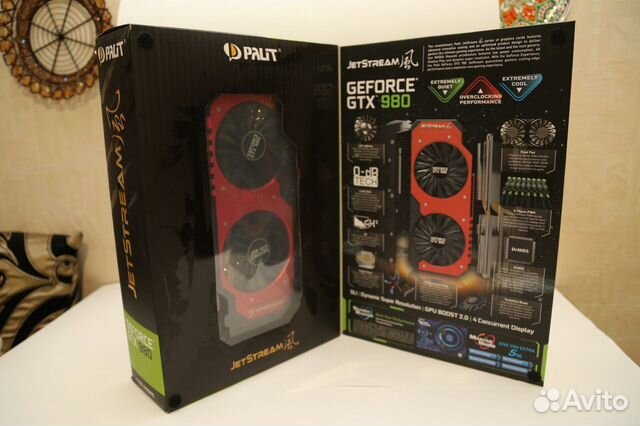
5.DVI outputs
Allows you to connect to a display using DVI.
6.mini DisplayPort outputs
Allows you to connect to a display using mini-DisplayPort.
Price comparison
Cancel
Which are the best graphics cards?
Palit GTX 980 Super JetStream
NVIDIA launched its Maxwell GM204 based GPU back then in September 2014 and we’ve seen its prime from our review of both GTX970 and GTX980, but that’s just the beginning of our review on the Maxwell GM204 based GPU from NVIDIA. In collaboration with one of our nation’s best gaming rig builder at Ideal Tech, we manage to get our hands on the Palit GTX980 Super JetStream for today’s review.
Palit GTX980 Super JetStream features not only features of the latest NIVIDA Maxwell GPU, but also a custom PCB design, 0db fan cooling of its own. The retail price of the Palit GTX980 Super JetStream will be around RM2119, but let’s put that aside now and focus on what kind of performance can we expect from it.
Specifications
|
Model Name |
Palit GTX 980 Super Jetstream |
|
Graphics Engine |
NVIDIA GeForce GTX 980 |
|
Bus |
PCI Express 3.0 |
|
Video Memory |
4GB GDDR5 |
|
Engine Clock |
GPU Boost Clock: 1304 MHz GPU Base Clock: 1203 MHz |
|
CUDA Core |
2048 |
|
Memory |
7200 MHz |
|
Memory Interface |
256-bit |
|
Interface |
DVI Output : Yes x 1 (DVI-I) HDMI Output : Yes x 1 (HDMI 2. Display Port : Yes x 3 (mini HDCP Support : Yes |
|
Accessories |
Manual, Driver Disc, |
|
Software |
Palit ThunderMaster |
|
Dimensions |
280mm x 140mm x 40mm |
Packaging
The retail packaging of the Palit GTX980 Super JetStream comes with its usual Chinese character 風 which carries the meaning of wind. There’s not much details provided here except for the latest technology from NVIDIA.
This one appears to be a limited offer where a coupon for in-game rewards in Phantasy Star Online 2 is included.
Behind the packaging we don’t see any details related to the JetStream series graphics card other than what’s from NVIDIA.
Upon further examining the packaging, we find a lid which reveals the description introducing the unique features of the graphics card itself (Finally?).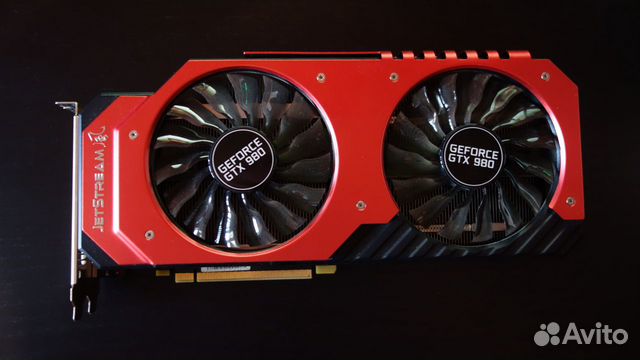
Accessories
The included accessories seems pretty standard, a driver CD, user’s manual, DVI-VGA adapter, PCIe Y-Splitter and a free coupon to redeem in-game rewards for the game Phantasy Star Online 2.
Closer Look
The GTX980 Super JetStream has taken on a new look with dual cooling fan design and a new red-black themed shroud instead of the usual triple cooling fan and black-gold themed shroud.
LED cooling fans is used as an element of aesthetics.
The distinctive JetStream logo.
And there’s the brand logo of Palit.
Requirement to power up the GTX980 Super JetStream, 6-pin PCIe and 8-pin PCIe power connector.
The amount of heatpipes and aluminum fins on heatsink does looks very promising.
SLI fingers for multiple NVIDIA GPU configuration – up to 4 GPU.
Not a fancy looking backplate we’d say, but it’ll still provide the very same protection to the card by improving its rigidity to prevent sagging or PCB bending issue.
The GTX980 Super JetStream comes with a total of 5 output display connector to satisfy your needs for multiple display monitor – 3 x Mini Display Port, 1 x HDMI and 1 x DVI-I.
Performance Test
|
Test |
|
|
CPU |
Prolimatech |
|
CPU |
Intel |
|
Motherboard |
ASUS |
|
Memory |
G.Skill TridentX [email protected] |
|
Primary |
Kimtigo |
|
Power |
BitFenix |
|
Chassis |
Vector Benchcase |
We’ve conducted our test by installing the Palit GTX980 Super JetStream to our test bench as above and each and every benchmark is conducted in a room with 31C° ambient temperature.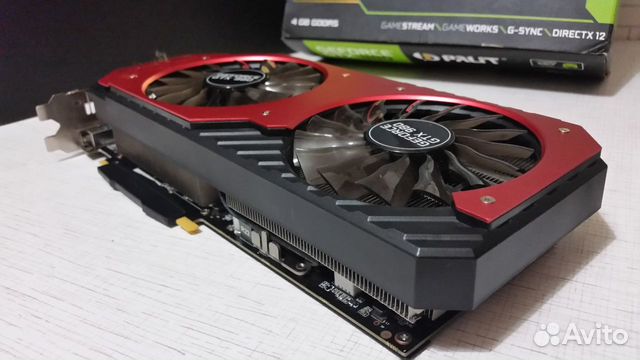
Performance, Overclocking and Temperature
We ran a few graphically demanding games and synthetic benchmark in our possession at the resolution of 1920 x 1080, 4x Anti-aliasing. Due limited voltage adjustment, we’ve only managed to push the Palit GTX980 Super JetStream to its highest stable clock that is able to complete each game benchmark with the following values:
- Maximum boost clock of 1492 MHz
- 8025 MHz on the memory clock
- 1.2V on the voltage for GPU
The final result of each benchmark is presented in the form of the graph below:
Although the overclocking result in numbers looks pretty impressive, but the performance gain we’re seeing here is a little odd for certain benchmark. Here’s the difference that we’ve observed in each benchmark after overclocking the Palit GTX980 Super JetStream:
- Unigine Valley: 10.5%
- Unigine Heaven: 13.9%
- Tomb Raider: 9.5%
- Battlefield 3: 9.
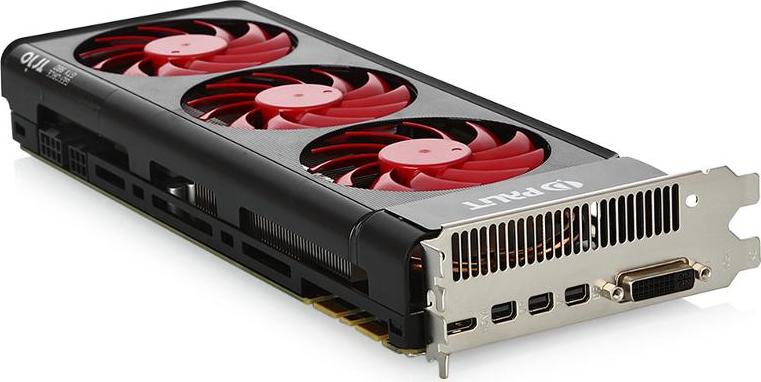 5%
5% - Battlefield 4: 12.6%
- Crysis 3: 21.8%
- Far Cry 3: 13.1%
Temperature wise, the idle temperature hovers around 46°C which we consider unpleasant to our eye but still acceptable as it’s unlikely to damage any component with that temperature. It’s cooling performance seems pretty decent but we’re expecting it to be better as the highest temperature of 78°C is recorded when we’re on FurMark stress test utility, a little warmer compared to the previous Maxwell based GTX 980 that we’ve previously dealt with.
Final Thoughts
The Palit GTX980 Super JetStream displays great overclocking potential despite of the overvoltage limitation set by NVIDIA since October 2012 and 1492 MHz is the current highest clock we can get to run the graphics card stably with the current limitations.
Similar to what we’ve seen on the ASUS STRIX graphics card 0db fan design where the cooling will on spins when the GPU temperature hit above 65°C, the idle temperature gets pretty warm and some might find it uncomfortable even though the temperature is still not quite enough to do any damage to the graphics card – that’s the trade off for its silent cooling.
And finally it’s down to the price tag, RM 2099. While the cheapest GTX980 around costs roughly RM1999, paying that RM20 extra doesn’t seems to be a bad deal for those who seeks for a balanced graphics cards in terms of noise/performance/price. The only thing that concerns us now is the coil noise issue when the card is on full load even though this doesn’t really affects the performance.
Pros
- Aesthetic appearance
- Reasonable price for the extras
- One of the highest factory overclocked GTX980
- Good overclocking potential
- Comes with a metal backplate for enhanced rigidity and protection against PCB sagging
- Comes with free coupon for in-game item redemption (could be a limited offer)
- Able to maintain a decent idle temperature even without cooling support from fans
Cons
- Limited overclocking capability due to NVIDIA’s Green Light Program
- higher idle temperature due to the fans that only spins when the temperature hits above 65°C
- Odd choice of video output
- Coil noise issue
American reconnaissance aircraft approached Crimea
US Air Force Boeing RC-135V strategic jet transport aircraft carried out reconnaissance off the coast of Crimea and the borders of the Kaliningrad region. Earlier, the head of the radio engineering troops of the Aerospace Forces of the Russian Federation, Andrey Koban, said that in 2018, more than 980,000 air objects were detected and escorted by duty combat crews.
Earlier, the head of the radio engineering troops of the Aerospace Forces of the Russian Federation, Andrey Koban, said that in 2018, more than 980,000 air objects were detected and escorted by duty combat crews.
US Air Force strategic jet transport aircraft Boeing RC-135V carried out reconnaissance off the coast of Crimea and near the borders of the Kaliningrad region on Thursday, December 27th.
A message from the monitoring resource PlaneRadar on Twitter notes that an electronic reconnaissance aircraft took off from the Greek island of Crete at about 7 am Moscow time. A few hours later, the board began to explore the Russian Black Sea coast.
“08.20 Moscow time. Approaching the Black Sea,» PlaneRadar said in a statement.
At about 1 pm the aircraft returned to its base airfield. Later, the same plane flew near the borders of the Kaliningrad region and Belarus, reports FAN .
Two weeks earlier Andrey Koban, head of the Radio Engineering Troops of the Aerospace Forces of the Russian Federation, spoke about the tension created by such flights of NATO aircraft near the Russian borders, reports Krasnaya Zvezda .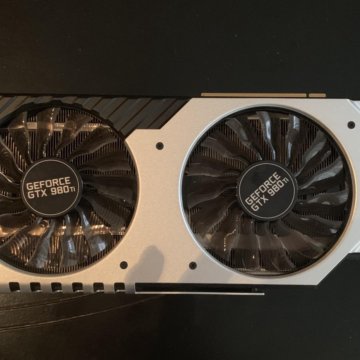
“Combat duty is intensified primarily by an increase in the intensity of air traffic within the boundaries of responsibility of the radio engineering troops. Every day, duty forces detect and escort more than 5,000 air objects, of which about 2,500 are foreign aircraft. About 20 subdivisions are put on alert No. 1,” the military man said.
At the same time, he assured that the Russian troops are ready for this type of reconnaissance by foreign aircraft.
“In 2018, the on-duty combat crews of the radio engineering troops detected and provided escort for more than 980,000 air targets.
Of these, about three thousand combat foreign aircraft, including more than a thousand reconnaissance aircraft. At the same time, duty forces were put on alert No. 1 more than four thousand times. This is a clear proof of the high intensity of combat duty in the radio engineering troops, to which we are accustomed and ready for, ”said the general.
Last month, the US Navy’s Boeing P-8A Poseidon anti-submarine aircraft conducted a reconnaissance flight in the Kerch Strait and Crimea. According to the PlaneRadar portal, the plane approached the coastline of the Crimean peninsula by 31 km. The flight time was 1 hour 10 minutes. Having completed the flight, the aircraft returned to its home airfield.
According to the PlaneRadar portal, the plane approached the coastline of the Crimean peninsula by 31 km. The flight time was 1 hour 10 minutes. Having completed the flight, the aircraft returned to its home airfield.
The day before, a US Air Force RQ-4A Global Hawk strategic unmanned aerial vehicle conducted reconnaissance in the same area. Having flown around the southern coast of Crimea and Kerch, he also monitored the line of demarcation in the Donbass.
Another US Air Force Boeing RC-135V electronic reconnaissance aircraft made a reconnaissance flight along the Russian coast of the Black Sea on Monday morning, November 26th.
A scout with the callsign BASTE41 took off from the Souda Bay air base on the island of Crete at 08:50 Moscow time and headed towards the Crimea. Boeing flew through the airspace of Bulgaria, and then turned east, flying around the Crimean and Caucasian coasts of Russia.
Earlier last month, a Russian Tupolev Tu-142 anti-submarine aircraft flew at low altitude over NATO ships that were participating in exercise Trident Juncture.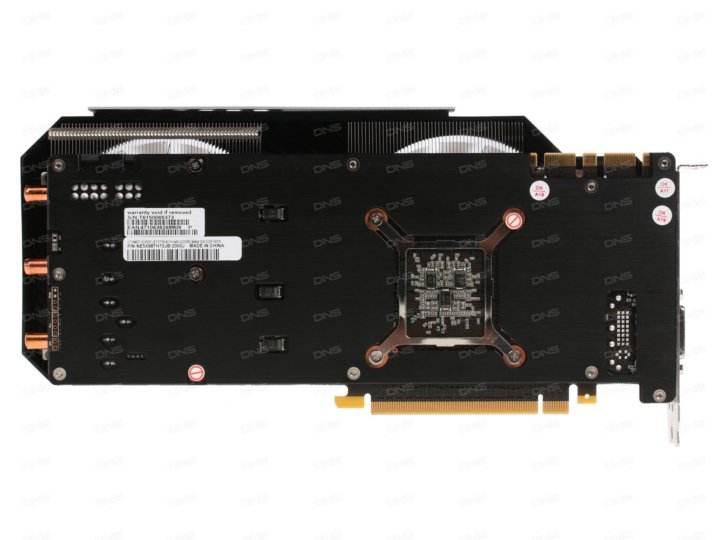
NATO Secretary General Jens Stoltenberg said that these maneuvers were not directed against any particular country.
However, they send the message that «NATO is ready and able to protect all allies from any threat.»
Also in November, a Russian Aerospace Forces Su-27 fighter took off to escort an American EP-3E reconnaissance aircraft near Russian borders. As specified in the Ministry of Defense of the Russian Federation, the flight took place at a safe distance.
According to the military, first duty airspace control facilities noticed an unidentified target over the neutral waters of the Black Sea, which was gradually moving towards the Russian border.
Then a Su-27 fighter flew up to a safe distance to an unidentified object, identified it, and then began to escort it, preventing violations of Russia’s borders. When the EP-3E took a different course and began to move away, the attack aircraft of the Russian Aerospace Forces returned to its airfield.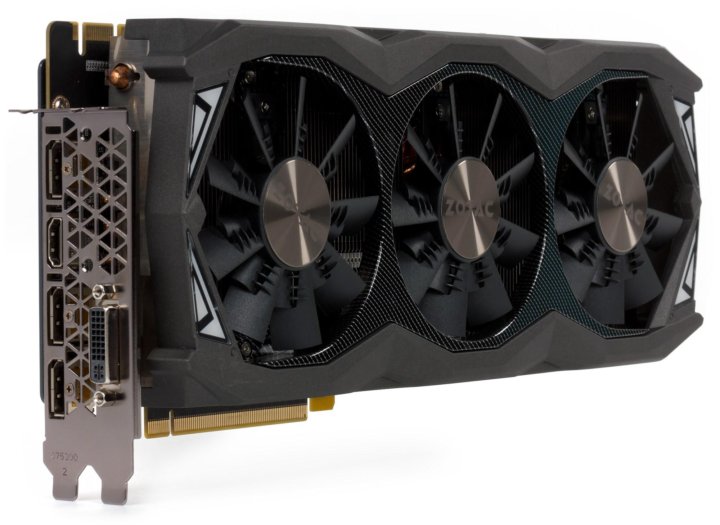
“The Russian Aerospace Forces taught the US Navy command a clear lesson that it is much safer to spy on the Russian region remotely,” Andrey Kozenko, State Duma deputy from Crimea, said in this regard.
He also promised that
RF Armed Forces would continue to defend their territory from foreign reconnaissance from the air.
“Of course, stopping any attempts to violate the airspace in such a precautionary, careful, I would even say, way is the essence of the work to cool Washington’s heads and a reminder that Crimea today is a strategic region of Russia,” the parliamentarian noted.
Active and jet turbines — Studiopedia
Share
Turbines in which the entire available heat difference is converted into the kinetic energy of the flow in the nozzles, and no expansion occurs in the channels between the working blades (the pressure of the working fluid does not change), are called active or equal pressure turbines.
In the simplest active turbine, the working fluid enters the nozzle 1 (or a group of nozzles), accelerates in it to a high speed and is directed to the working blades 2 (Fig.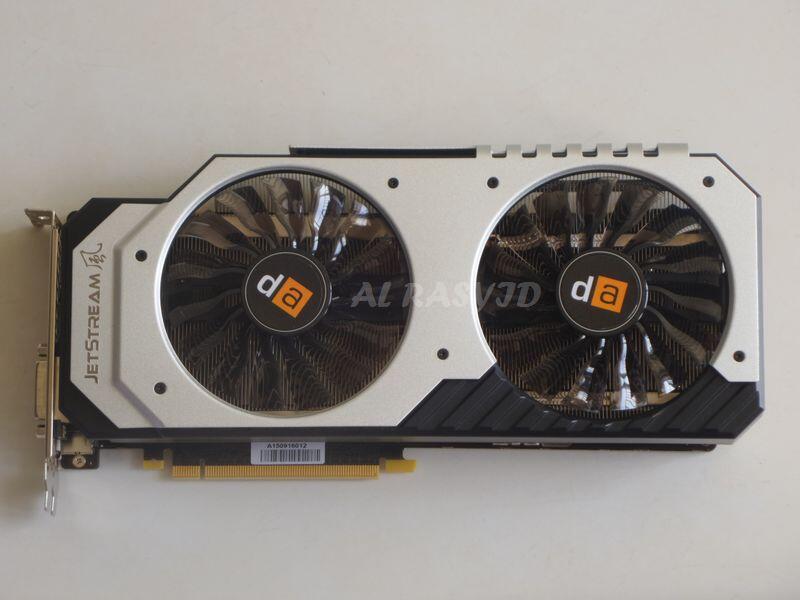 35). The forces caused by the rotation of the jet in the channels of the working blades (see Fig. 34, c) rotate the disk 3 and associated shaft 4. A disk with working blades and a shaft attached to it is called a rotor. One row of nozzles and one disk with working blades make up a stage.
35). The forces caused by the rotation of the jet in the channels of the working blades (see Fig. 34, c) rotate the disk 3 and associated shaft 4. A disk with working blades and a shaft attached to it is called a rotor. One row of nozzles and one disk with working blades make up a stage.
Fig. 35. Diagram of the turbine stage
On the blades of the impeller, the kinetic energy of the flow is converted into work. When entering the blade, the circumferential component of the flow velocity coincides with the direction of movement of the blade, and when leaving, it is opposite to it (Fig. 28). Therefore, the absolute flow velocity at the outlet is much less than at the inlet.
The moving flow acts on the rotor blades with a force of . (circumferential force) causes the rotor to rotate.
A single-stage active turbine was built by Laval in 1883. (Fig. 36).
Fig. 36. Scheme of a single-stage Laval turbine
Steam enters one or more nozzles 4, acquires a significant speed in them and is directed to the rotor blades 5.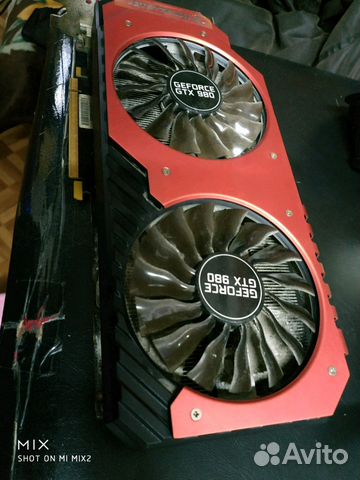 The exhaust steam is removed through the exhaust pipe 8. blades and shaft 1 , enclosed in housing 6. Front 2 and rear 7 labyrinth seals are installed at the shaft passage through the housing to prevent steam leakage. Since the entire available heat drop is worked out in one stage, the flow rates in the nozzles turn out to be large. When, for example, superheated steam with parameters of 1 MPa and 500°C expands to a pressure of 10 kPa, the heat drop is rounded equal to 980 kJ/kg, which corresponds to a flow velocity of 1400m/s. At such flow rates, large losses are inevitable and, most importantly, circumferential velocities in them that are unacceptable in terms of the strength of the blades. Therefore, single-stage Laval turbines have limited power (up to 1 MW) and low efficiency. All large turbines are made multistage. On fig. 37 shows a diagram of an active multi-stage turbine, which includes several stages arranged in series along the course of the steam, sitting on the same shaft.
The exhaust steam is removed through the exhaust pipe 8. blades and shaft 1 , enclosed in housing 6. Front 2 and rear 7 labyrinth seals are installed at the shaft passage through the housing to prevent steam leakage. Since the entire available heat drop is worked out in one stage, the flow rates in the nozzles turn out to be large. When, for example, superheated steam with parameters of 1 MPa and 500°C expands to a pressure of 10 kPa, the heat drop is rounded equal to 980 kJ/kg, which corresponds to a flow velocity of 1400m/s. At such flow rates, large losses are inevitable and, most importantly, circumferential velocities in them that are unacceptable in terms of the strength of the blades. Therefore, single-stage Laval turbines have limited power (up to 1 MW) and low efficiency. All large turbines are made multistage. On fig. 37 shows a diagram of an active multi-stage turbine, which includes several stages arranged in series along the course of the steam, sitting on the same shaft. The stages are separated from each other by diaphragms in which nozzles are built.
In such turbines, the pressure drops as the steam passes through the nozzles and remains constant on the rotor blades. The absolute steam velocity in the stage, called the pressure stage, then increases — in the nozzles, then decreases — on the rotor blades. Since the volume of steam increases as it expands, the geometric dimensions of the flow path increase along the course of the steam. If the total body drop ( h 0 — h out ) is equally distributed between z pressure stages, then the speed of steam outflow from the nozzles of each stage, m/s, . It follows that the use of pressure stages can achieve moderate values of with 1 , ensuring high efficiency.
Fig. 37. Scheme of an active turbine with three pressure stages:
1 — nozzle; 2 — inlet pipe; 3 — working blade of the 1st stage; 4 — nozzle; 5 — second stage working blade; 6 — nozzle; 7 — 3rd stage working blade; 8 — exhaust pipe; 9 — diaphragms
The first model of an engine using reactive power was built by Hero of Alexandria in 120 BC. (Fig. 38).
When steam flows out of the nozzles, reactive forces arise here that rotate the system counterclockwise. The turbine stage, according to Heron’s model, would be a rotating disk with nozzles, to which it is necessary to organize a continuous supply of the working fluid. Due to the complexity of designing such stages, and even more so multistage turbines, purely jet turbines have not been created. The jet principle has found wide application only in jet engines of aircraft (rockets, airplanes, etc.).
In practice, turbines are called reactive, in which the available heat difference is converted into kinetic energy of the flow not only in the nozzles, but also on the rotor blades.
Fig. 38. Scheme of the first model of a jet steam turbine
Modern powerful turbines are multi-stage with a certain degree of reactivity, most often Ohm = 0.5. In each stage of such a turbine, the expansion of the working fluid occurs not only in the nozzle channels, but also on the rotor blades. The stage fires only a part of the total pressure drop across the turbine, and with a large number of them, the pressure difference in an individual stage turns out to be small, and the flow rates are moderate. With the degree of reactivity Ohm = 0.5, the nozzle and working blades have the same shape. Moreover, the same blade profile can be used in all turbine stages, and only the length of the blades changes in accordance with the increase in the volume of the working medium as the pressure decreases. This is convenient from the point of view of their manufacture.
The stage fires only a part of the total pressure drop across the turbine, and with a large number of them, the pressure difference in an individual stage turns out to be small, and the flow rates are moderate. With the degree of reactivity Ohm = 0.5, the nozzle and working blades have the same shape. Moreover, the same blade profile can be used in all turbine stages, and only the length of the blades changes in accordance with the increase in the volume of the working medium as the pressure decreases. This is convenient from the point of view of their manufacture.
The left half of figure 39 shows the casing or high-pressure cylinder (HPC) of a 300 MW condensing triple-casing turbine for supercritical steam parameters with reheat steam up to 565 °C. HPC is a double-walled cast structure. The steam first enters the nozzle box 4, located in the inner casing 3, passes through stage 6 with two blades and five pressure stages from right to left. Leaving the inner casing, the steam turns 180°, passes between the inner and outer 1 housings and goes on to six pressure stages. At the same time, it washes and cools the inner body, and also partially unloads its walls, which are under internal pressure. In the inner casing, the diaphragms 2 are attached directly to the wall, and in the outer casing they are fixed in intermediate cages 5. The cages allow organizing steam extraction for regeneration.
At the same time, it washes and cools the inner body, and also partially unloads its walls, which are under internal pressure. In the inner casing, the diaphragms 2 are attached directly to the wall, and in the outer casing they are fixed in intermediate cages 5. The cages allow organizing steam extraction for regeneration.
After intermediate overheating in the boiler, steam with parameters of 3.53 MPa and 565 °C enters the medium and then low pressure housing (right).
Fig. 39. Longitudinal section of the turbine K-300-240-1 LMZ:
on the left — high pressure cylinder; right — medium and low pressure cylinders
Scientific and technical foundations of nuclear power. T. 2. — 1950 — Electronic Library «History of Rosatom»
Home → Index of works
Electronic Library History of Rosatom
Nothing found.
Loading results…
91801811821831841851861871881891
1921931941951961971981992002012022032042052062072082092102112122132142152162172182192202212222232242252262272282292302312322332342352362372382392402412422432442452462472482492502512522532542552562572582592602612622632642652662672682692702712722732742752762772782792802812822832842852862872882892
292293294295296297298299300301302303304305306307308309310311312313314315316317318319320321322323324325326327328 329330331332333334335336337338339340341342343344345346347348349349 incl. 1
1
Increase/Reduce the scale of
on page width
in height page
SUBLECTION/RASTENS
Page Turn
Navigation on the document
Search in the publication page text
(works in Chrome 42+,
Microsoft Internet Explorer and Mozilla FireFox
with Adobe Flash Player installed)
Bookmark
Current pages are framed.
Content
Cover cover
1 Titile sheets
4th editorial office
5
CoEN K.
Chapter I. Chapter I. Separation
51. Introduction
62. Statement
73. The optimal cascade
104
125. More general cases of cascades
146. Separation power
167.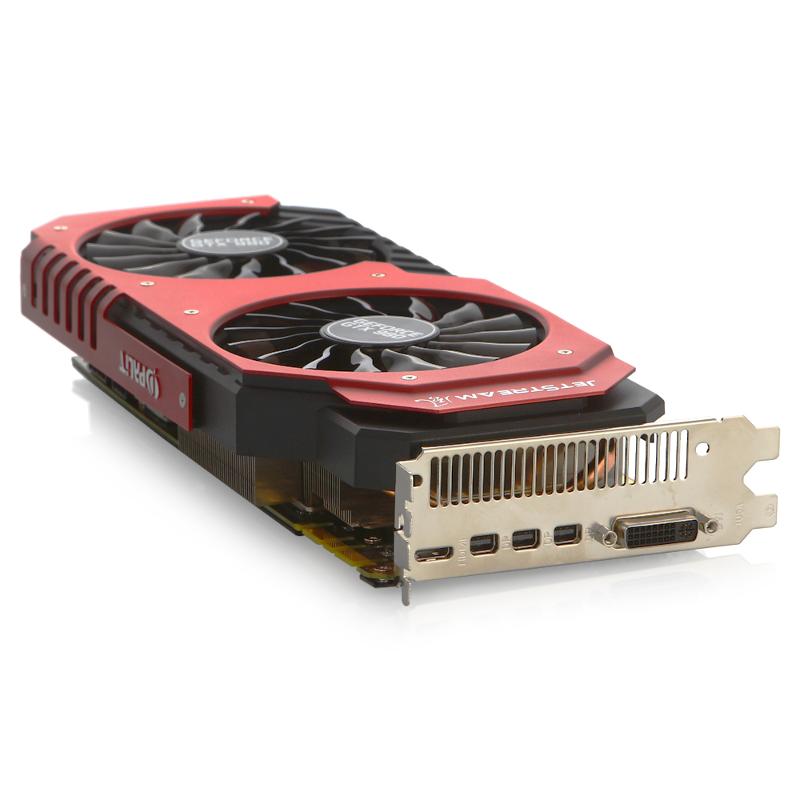 Distillation
Distillation
208. Some applications
23
Armistead F.
Chapter II. Vacuum technique
231. Introduction
232. Separation of isotopes
243. Shells in boilers
244. Particles accelerators
245. General description of the leakage installation
296. Methods of the current
9000 317. The cap
328. Masqueation of masking. and flushing
329. Sensitivity and estimation of leak size
3410. Leak detection methods
3511. Some notes on the design of vacuum-tight systems
36 Literature for Chapter II
37
Fridman F.
Chapter III. Theoretical foundations of some measurements necessary for designing boilers
371. Introduction
372. Density of moderation near a point source
403. Measurement of the resonant capture probability
414. Measurement of L 2
445. Measurement of the thermal utilization factor0003 47
Sargent B.
Chapter IV. Studies in neutron physics on Chok-River
Studies in neutron physics on Chok-River
47 47-pound of
471. Introduction
482. Reproduction of neutrons in a boiler on heavy water
503. Description of a low-power boiler
53NONETRONE Physics
9000 534. Diffusion of thermal neutrons in severe water
565. Mean transport length for thermal neutrons in heavy water
566. Diffusion length for thermal neutrons in heavy water
597. Boiler shutdown
61 References for Ch. IV
62
Weinberg A.
Chapter V. Calculation of the distribution of neutrons in heterogeneous boilers 70
Plyachek G.
Chapter VI. The concept of albedo in the elementary theory of diffusion
701. Theory
752. Determination of albedo
813. Asymmetric distributions of sources
824. Use of albedo to determine critical dimensions
84References to Ch. VI
85
Sudak G.
Chapter VII. Boiler kinetics
851. Introduction
852. General remarks. Own states
Own states
883. Tasks of tasks
894. Approach to equilibrium distribution
905. The effect of delaying neutrons
966. Forced fluctuations in the boiler
1007. Outings in a complex boiler
103
Hoffman F.
Chapter VIII. Statistical consideration of the theory of boilers
103[Introduction]
106K measurements
108Definition of γf
114 Study of equation (8.25). Selection method
116 Study of equation (8.25). Method of analysis of experimental curves
118 Intensity fluctuations in a water boiler
124
Jilliland E., Bareys D., Fake G.
Chapter IX. Removal of heat from nuclear reactors
1241. Introduction
1272. General relationships
1293. Consideration of various coolants
1344. Design variables
1365. Non-circular cross-sections
1386. Sinusoidal energy release
1477. Distribution of temperature along heat transmitting tubes
151reactor with helium cooling
1518. Starting assumptions of the calculation
Starting assumptions of the calculation
1519. Heat transfer and energy balance
15310. The results of calculations
15411. power cycle considerations
156Water cooled reactor
15612. Calculation assumptions
15713. Temperature and pressure
15814. The volume of the coolant
15815. Water in the ring gap
15916. Sinusoidal energy release
16017. Gas gap
161 liquid metals as coolants
16118. Initial assumptions of the calculation
16319. The heat -thermally reactor system from the reactor 9000.
17020. Sodium cooled reactor
17221. Steam boiler arrangement
173 Physical constants
17322. Sodium
17423. Lead
17524. Summary of physical permanent
17525. Calculation formulas
18226. Calculation of steam boiler
185 filling
188
Jhan Shen-SU
Chapter X. Rockets and other reactive engines using nuclear energy (with reviews use of porous materials in a boiler)
1881.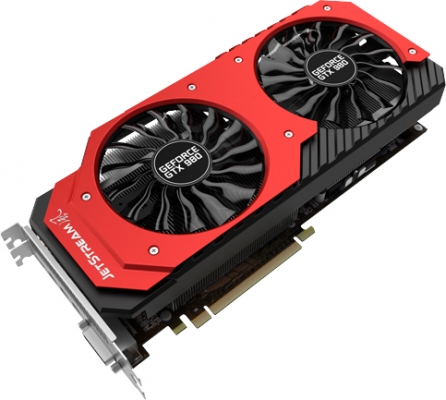 Simple theory of rockets
Simple theory of rockets
1892. Relativistic theory of rockets
1923. Idealized optimal installation using nuclear energy
1954. A missile with nuclear fuel
2005. Examples of calculating a rocket with nuclear combustible
2046. Opportunities to reduce a critical size
2067. The use of nuclear fuel for other jet engines
2078. Advantages of the porous material for the reactor
209 9999999 99999 99 Litigatingities to ch. X
210
Goldberger M.
Chapter XI. Protection of Nuclear Reactors
2101 Introduction
2112 Permissible Radiation Doses
2153. Absorption of radiation in matter
223 References for Ch. XI
224
Allen A.
Chapter XII. Effect of radiation on matter
2241. Introduction
2242. Types of radiation and their effects on matter
2263. Effect of radiation on chemical bonds
2274. Effect of radiation on simple gases
2315. solutions
2417 Corrosion of metals
2428 Solids
245 Literature for Ch. XII
XII
247
Irvin J.
Chapter XIII. Obtaining radioactive isotopes
2471. Introduction
2472. The main production methods
2503. Industrial standards for radioactive isotopes
2544. Neutron reactions
2585. Fecal reactions
2636. Production problems
265 265 liners to Gl. XIII
266
Kaufman A.
Chapter XIV. Materials used in the construction of boilers: metals, alloys and compounds
266 stamping and broaching
2799. Anisotropy of materials
27910. Welding
281
Evans R.
Chapter XV.
Service Personnel Health 2811 Introduction
2832. Types and sources of radiation
2843. Basic characteristics of living tissues
2864. Biological effects of radiation
3045. Equipment used in safety engineering
307 Literature for Ch. XV
308
Goodman K.
Chapter XVI. Prospects for the use of nuclear energy
3081. Application of nuclear energy
3092.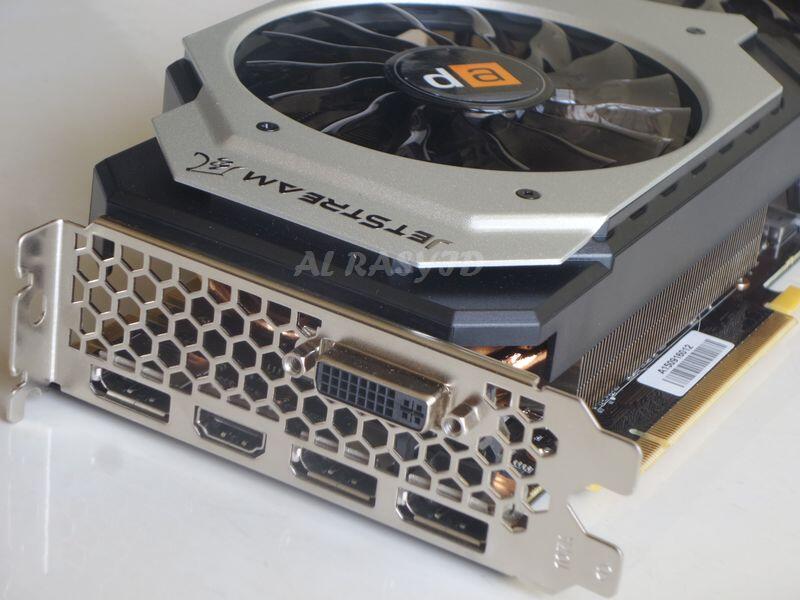 Aircraft using nuclear energy
Aircraft using nuclear energy
3143. Submarine using nuclear energy
3154. Industrial use of nuclear energy
3185. The world need for energy
3206. Economics of nuclear energy
3247. New nuclear fuel
327 Appendix
329
Stevens G.
Energy Equal Equation A. fission process 334
Pomeroy J.
Appendix B. Electromagnetic methods of isotope separation 340
Boyer C., Title K.
Appendix C. Number of secondary neutrons per fission and their energy
348 Table of contents
348 End page
349 Misprints 1Insert
Referring to the site «History of Rosatom — Electronic Library»,
I agree to the terms of use of the materials presented there.
Site Rules (hereinafter referred to as the Rules)
- General Provisions
- These rules define the procedure and conditions for the use of materials posted on the site www.biblioatom.ru (hereinafter referred to as the Site), as well as the rules for using materials by the Site and the procedure
interaction with the Site Administration.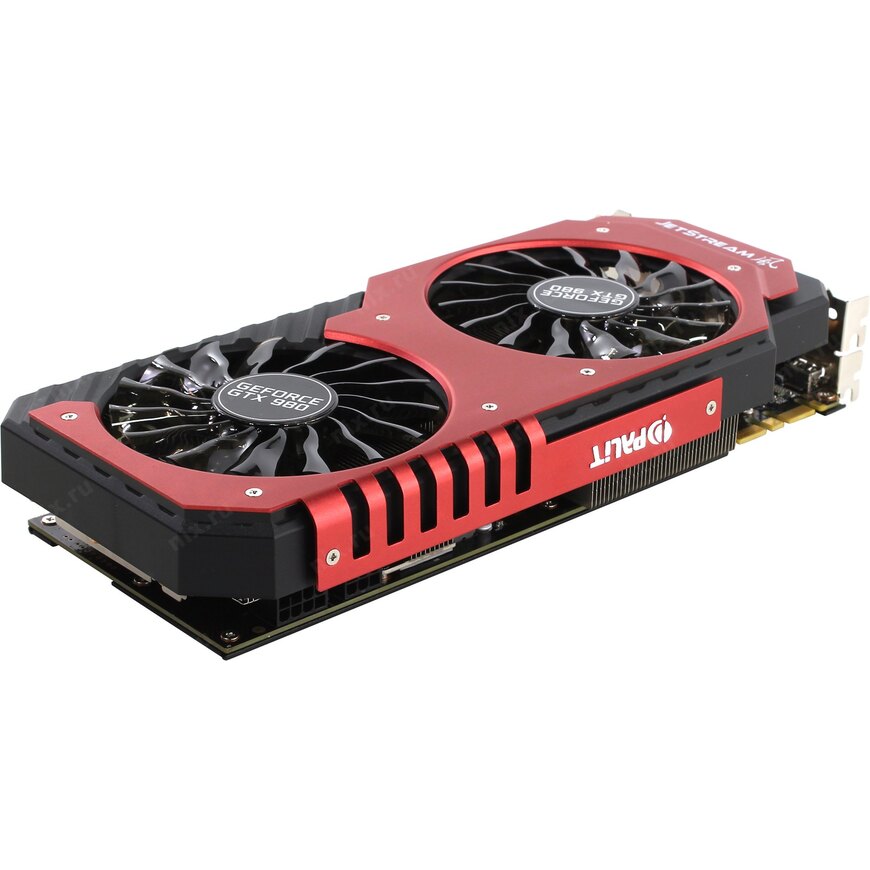
- Any materials posted on the Site are objects of intellectual property (objects of copyright or related rights, as well as rights to means of individualization). Administration rights
The site on these materials are protected by the law on the rights to the results of intellectual activity. - The use of materials posted on the Site is allowed only with the written consent of the Site Administration or other copyright holder, expressly indicated on the specific material posted on
Site, or in the immediate vicinity of the specified material. - The rights to use and permit the use of materials posted on the Site, owned by other copyright holders than the Site Administration, is allowed with the permission of such copyright holders
or in accordance with the terms and conditions set by such rights holders. None of the provisions of these Rules gives the rights to third parties to use the materials of the copyright holders expressly indicated on
specific material posted on the Site, or in the immediate vicinity of the specified material.
- These Rules apply to the following users: news agencies, electronic and print media, any individuals and legal entities, as well as
individual entrepreneurs (hereinafter referred to as «Users»).
- These rules define the procedure and conditions for the use of materials posted on the site www.biblioatom.ru (hereinafter referred to as the Site), as well as the rules for using materials by the Site and the procedure
- Use of materials. Uses for
- The use of the Site materials means reproduction, distribution, public display, broadcasting, cable communication, translation, processing, making available to the public and other
methods of use provided for by the current legislation of the Russian Federation. - Using the materials of the Site without obtaining permission from the Site Administration is not allowed.
- Making any changes and / or additions to the materials of the Site is prohibited.
- The use of the Site materials is carried out on the basis of agreements with the Site Administration concluded in writing, or on the basis of a written permission issued by the Site Administration.
- Any use (non-contractual / without permission) of photo, graphic, video, audio and other materials posted on the Site, owned by the Site Administration and other copyright holders is prohibited
(to third parties).
- The cost of using each specific material or issuing permission for its use is agreed upon by the User and the Site Administration in each specific case.
- If it is necessary to use the materials of the Site, the rights to which belong to third parties (owners other than the Site Administration, as expressly indicated on such materials or in
their immediate vicinity), Users are required to contact the copyright holders of such materials to obtain permission to use the materials.
- The use of the Site materials means reproduction, distribution, public display, broadcasting, cable communication, translation, processing, making available to the public and other
- Obligations of Users when using the materials of the Site
- 3.1. When using the materials of the Site for any purpose with the permission of the Site Administration, a link to the Site is required and is carried out in the following form:
- in printed publications or in other forms on tangible media Users are obliged to indicate the source in each case of using materials — the electronic library «History of Rosatom»
(www.biblioatom. ru)
ru)
- on the Internet or other forms of use in electronic form not on tangible media, Users in each case of using materials are required to place a hyperlink to the Site —
electronic
Library «History of Rosatom» (www.biblioatom.ru), the hyperlink must be active and direct, when clicking on which the User goes to a specific page of the Site from which the
material. - Link to the source or hyperlink specified in paragraphs. 3.1.1 and 3.1.2. of these Rules, must be placed by the User at the beginning of the text material used, as well as directly
under the used audio, video, photo, graphic material of the Site Administration.
- in printed publications or in other forms on tangible media Users are obliged to indicate the source in each case of using materials — the electronic library «History of Rosatom»
- The font size of the link to the source or hyperlink should not be less than the font size of the text in which the materials of the Site are used, or the font size of the text of the User accompanying the audio,
video, photographic materials and graphic materials of the Site, as well as the color of the link must be identical to the colors of the links on the Site and must be visible to the User.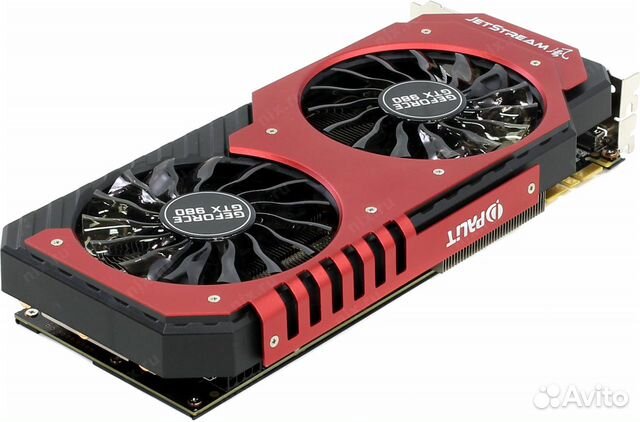
- Use of materials from the Site obtained from secondary sources (from other copyright holders than the Site Administration, as expressly indicated on such materials or in close proximity to
them), is possible only with reference to these sources and, if necessary, established by such sources (right holders), with their permission. - It is not allowed to process the original material (work) taken from the Site, including the reduction of the material, its other processing, including the distortion of its meaning.
- 3.1. When using the materials of the Site for any purpose with the permission of the Site Administration, a link to the Site is required and is carried out in the following form:
- Third Party Rights, Claims Settlement
- Materials, the rights to which belong to third parties, posted on the Site, are posted either with the permission of the copyright holder received by the Site Administration, or, if such use
not expressly prohibited by the copyright holder, in accordance with the Legislation of the Russian Federation for informational purposes with the obligatory indication of the name of the author whose material is used, and the source of borrowing.
- In the event that in the designation of authorship of materials in accordance with clause 4.1. of these Rules contains an error, or if the material is used with an alleged or real violation of rights
third parties, or in other controversial cases of using intellectual property objects posted on the Site, including in the case when the rights of a third party are violated in one way or another with
using the Site, the following scheme for the settlement of claims of third parties to the Site Administration is applied:- a claim containing information about the intellectual property object, the rights to which
belong
to the applicant and which is used illegally through the Site or in violation of the rules of use, or otherwise the rights of the applicant as the owner of the exclusive right to the object of intellectual
property posted on the Site are violated through the Site, with documents confirming the applicant’s authority, data on the copyright holder and a copy of the power of attorney to act on behalf of
of the right holder, if the person submitting the claim is not the head of the right holder’s company or directly an individual — the right holder.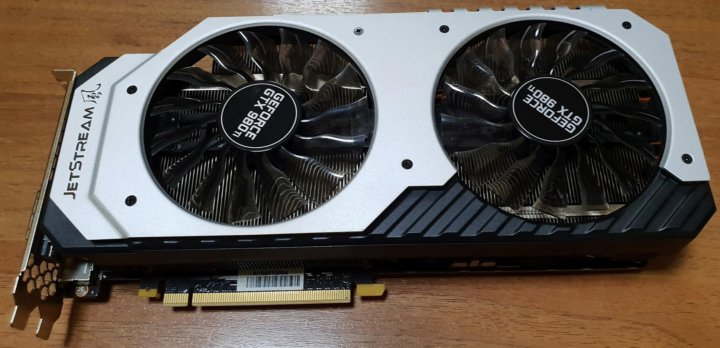 The claim also includes an address.
The claim also includes an address.
pages
the Site, which contains data that violates the rights, and sets out a full description of the essence of the violation of rights; - The Site Administration undertakes to consider a properly executed claim within a period of at least 5 (five) working days from the date of its receipt by e-mail. The Site Administration undertakes
notify
the applicant on the results of consideration of his application (claim) by sending an e-mail to the address indicated by the applicant, and also send a written response to the address,
specified by the applicant (in case of not specifying such a sending address, the obligation to provide a written response to the claim from the Site Administration is removed). including the administration
Site
has the right to request additional documents, certificates, data confirming the legitimacy of the claim. If the claim is recognized as legitimate, the Site Administration will accept all
possible
measures necessary to stop the violation of the applicant’s rights and settle the claim; - The Site Administration, in any case, takes all possible measures to satisfy the justified claims of third parties as soon as possible and strive for the fastest possible settlement of all
controversial
questions.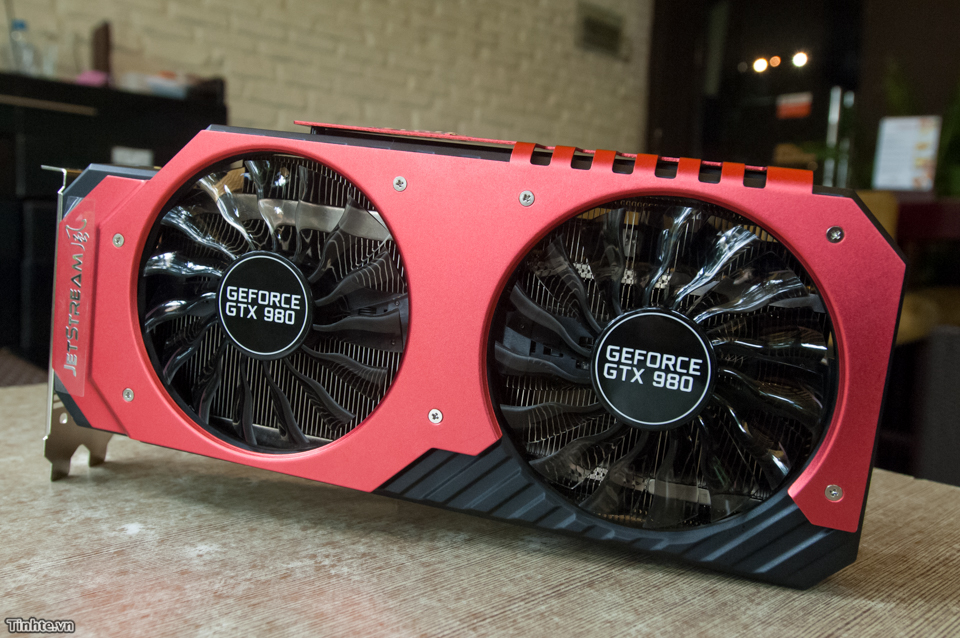
- a claim containing information about the intellectual property object, the rights to which
- Materials, the rights to which belong to third parties, posted on the Site, are posted either with the permission of the copyright holder received by the Site Administration, or, if such use

 0)
0)